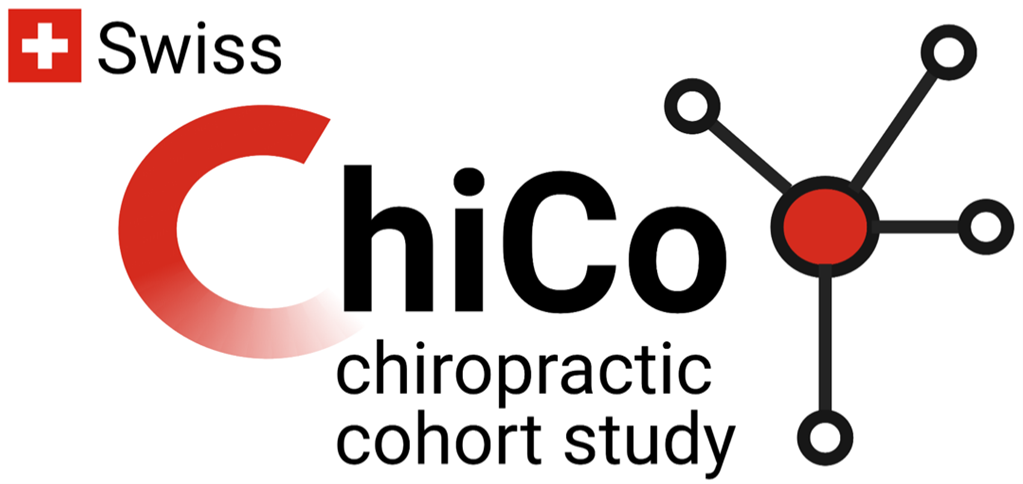Projects
Citizen Science for Musculoskeletal Health Research: Identifying Patient-Led Research Priorities in Switzerland

Deutsch/ Français / Italian Flyer download_alle_Sprachen (PDF, 2 MB)
Context Flyer EN (PDF, 537 KB)
Musculoskeletal (MSK) conditions are a leading cause of disability and a significant burden on healthcare systems in Switzerland. Despite a national prevention strategy and available guidelines, their real-world implementation remains limited. Moreover, research often fails to address the questions that matter most to those living with these conditions. This project places patients at the centre of agenda-setting to ensure future research and care are aligned with their real-world needs and priorities.
About the Project
This citizen science initiative aims to co-create the future of MSK research in Switzerland by:
- Identifying the most important research priorities from the perspective of people living with MSK conditions.
- Laying the foundation for a Swiss MSK Registry that is both relevant and patient-centred
- Ensuring that the patient voice directly guides future research and healthcare improvements.
Project Structure
The project is built around a diverse Citizen Science Board of 30 individuals with lived experience of MSK conditions.
Workshop 1:
The Board will share experiences and collaboratively identify key research priorities.
National Survey: These priorities will be validated through a nationwide survey distributed to a broad MSK population.
Workshop 2:
The Board will reconvene to discuss the survey results and refine the priorities.
Workshop 3:
The final workshop will focus on reaching a consensus on the most important research questions identified.
To minimize your effort and avoid long travels, we schedule our workshops based on demand:
Workshop 1: In-person (held in various regions across Switzerland as needed)
Workshops 2 & 3: Online
Schedule: The first workshop is planned for the end of January.
Locations & Exact Dates: Will be confirmed once recruitment is complete.
Join the Citizen Science Board
We are looking for people living with MSK conditions from all language regions of Switzerland, of all sexes, ages, and backgrounds to join our Citizen Science Board.
Your experience matters!
Project lead: Cesar Hincapié, Clara Gieseke Lopes
Project partner: Judith Safford (Rheumacura), Thalia Nikoglou
Funding: Internal EBPI
Descriptive epidemiology and costs of chiropractic care in Switzerland: a nationwide health insurance database analysis
With the large global burden of musculoskeletal (MSK) pain conditions, better understanding of the epidemiology, costs, and variation of nonpharmacological healthcare such as chiropractic care is needed. The health insurance system in Switzerland covers all chiropractic care and Helsana Insurance is one of the largest Swiss health insurers (15% national market share). Sources of administrative health data (eg, Helsana), present a viable approach to study the epidemiology, utilisation, costs, and variation of chiropractic care in the Swiss population.
Objectives: To examine the descriptive epidemiology and costs of chiropractic care in Switzerland using Helsana’s nationwide health insurance data and describe trends over the past 5 years.
Relevance: This study will help advance fundamental epidemiologic and health economic knowledge of Swiss chiropractic care and may potentially inform evidence-based health system policies to help reduce the burden and costs of MSK pain both in Switzerland and abroad.
Project lead: Cesar Hincapié
Funding: In-kind support and collaboration with the Helsana Group
Expert prior elicitation and Bayesian analysis of the association between chiropractic care and acute lumbar disc herniation (LDH) with early surgical intervention
Chiropractic care, involving spinal manipulation therapy, is popular for low back pain, but little is known about its potential link to acute LDH with radiculopathy conceptualised as an adverse event. Several systematic reviews suggest that spinal manipulation is a viable therapeutic option for low back pain, but the summarized studies are of varying quality and too small to examine rare serious adverse events. Moreover, randomized clinical trials have shown benefit of spinal manipulation for the management of LDH with radiculopathy, yet little is known about serious adverse events possibly related to this treatment. This void of knowledge represents a problem because an effective treatment is one that cost-effectively improves health outcomes while first doing no harm.
A Bayesian approach to health services research provides an opportunity to advance knowledge despite a scarcity of information and evidence. Bayesian methods start with existing “prior” beliefs, formally quantified as probability distributions, and update these using new data (the likelihood) to arrive at “posterior” updated beliefs or knowledge. Quantifying currently held beliefs can determine the magnitude of a potential risk expected by experts and describe the presence of uncertainty about an exposure-outcome association. Experts in a field can have knowledge of the risk of using a treatment through years of clinical experience. When quantified, the knowledge gained from their clinical experience can be included in models estimating risk, which may help to bridge the gap between beliefs and evidence. Although infrequently used in epidemiologic research, a Bayesian approach may have important utility in the study of treatment-related rare serious adverse events, particularly in the absence of definitive scientific evidence.
Our objective is to undertake a Bayesian analysis of the association between chiropractic care and acute LDH with early surgical intervention. The findings of two published studies will be used to estimate the posterior probability of the association of interest using Bayes’ theorem. Expert prior elicitation from a clinician belief elicitation study will serve as informative Bayesian priors, and likelihood estimates will be sourced from a population-based epidemiologic study from Ontario, Canada.
Project lead: Cesar Hincapié
Funding: Internal
Fusion versus decompression surgery alone for lumbar degenerative spondylolisthesis: a comparative-effectiveness analysis and pragmatic health services assessment
Degenerative spondylolisthesis (DS) of the lumbar spine is one of the most common degenerative pathologies of the spine, with prevalence estimated between 19% and 43% depending on age and gender—it is more prevalent in the elderly and women. DS can cause both spinal instability and spinal stenosis, triggering low back pain and radiating pain to the lower extremities. With respect to the type of surgery, there is still no consensus on the optimal surgical strategy and debate remains as to whether decompression alone, consisting of the removal of portions of the dorsal bony and ligamentous structures, compared with decompression plus fusion (arthrodesis) results in clinically meaningful benefit and less harm to patients.
Objectives: Using data from the Swiss Lumbar Stenosis Outcome Study (LSOS), the aim of this study will be to evaluate the comparative effectiveness of decompression plus fusion surgery versus decompression alone in patients aged 50 years or more with degenerative spondylolisthesis (Meyerding I and II) over a long-term outcome of 3 years in the Swiss setting. We will complement this analysis with a pragmatic health services assessment that will compare the use of specific health resources (e.g., physical therapy and analgesics) in the two groups at 3 years.
Relevance: This project will provide valuable information about the expected benefit-harm assessment of these treatments in patients with degenerative spondylolisthesis requiring surgical intervention in Switzerland.
Project lead: Cesar Hincapié
Funding: Internal
How are feedback and communication strategies best used to communicate results of benchmarking in surgical care?
How best to provide feedback to healthcare providers and communicate with them to achieve changes in practice is an important part of a benchmarking cycle. The presumed benefit of an audit and feedback process to improve surgical practice is based on the belief that healthcare professionals are prompted to modify their practice when given performance feedback showing that their clinical practice is inconsistent with a desirable target (i.e., a benchmark).
Once a benchmark has been set for one or more outcomes in surgical practice, reducing the gap between current performance and the established benchmark is a complex process requiring a broad and rigorous perspective. We will perform a systematic search of the biomedical literature to review and map existing evidence on feedback and communication strategies related to benchmarking in surgical practice. Our aim is to outline the current evidence on delivering results of benchmarking to surgical healthcare professionals and summarise key findings on feedback and communication strategies within this context.
Project lead: Cesar Hincapié
Funding: Internal
Knowledge syntheses related to musculoskeletal (MSK) health and care epidemiology
We conduct systematic knowledge syntheses, including scoping reviews, systematic reviews, and meta-analyses, to identify and map currently existing evidence to explore research topics from a broad perspective and to identify research gaps related to patient centered MSK health and care epidemiology.
Minimal clinical data sets for spine related MSK disorders in primary care and outpatient settings – a scoping review: Lack of standardised clinical data collection may lead to reduced quality in MSK-related clinical care and research. Little is known about the availability and characteristics of minimal clinical data sets for spine related MSK disorders in primary care and outpatient settings and their utility for improving healthcare quality. Our objective is to undertake a scoping review aiming to identify and map current literature on minimal clinical data sets for measuring and monitoring health status in patients with spine related MSK disorders in primary and outpatient healthcare settings.
Publication: https://pubmed.ncbi.nlm.nih.gov/37952699/
Incidence and determinants of lumbar disc herniation (LDH) with radiculopathy in adults – a systematic review: LDH is the most common cause of lumbosacral radiculopathy. Compared to nonspecific low back pain, LDH with radiculopathy is associated with greater disability, healthcare use and intervention. Yet, little is known about its epidemiology. Our objective is to synthesize the best available evidence on the incidence and determinants of LDH with radiculopathy in adults.
Practice-based research networks (PBRNs) related to MSK primary healthcare – a scoping review: MSK disorders contribute to a high burden of disability worldwide and are the most prevalent disease area which would benefit from rehabilitation. Considering the increased demand for evidence-based care for MSK disorders, end user involvement in research, and primary care quality assurance that may be facilitated through PBRNs, we propose a scoping review to map the current evidence on PBRNs in the field of MSK healthcare. Specific objectives include: (1) to describe the features of PBRNs involved in MSK disorders research; (2) to examine how MSK disorders have been studied within the context of PBRNs; and (3) to assess PBRN research good practices of the identified MSK-related PBRNs.
Project lead: Cesar Hincapié
Funding: Internal
Risk for neurodegenerative disorders and effectiveness of nonsurgical interventions after mild traumatic brain injury (mTBI)
There is conflicting evidence of the causal association between mTBI and dementia (including young onset dementia, Parkinson disease, and amyotrophic lateral sclerosis. Our aim is to systematically review and synthesize the epidemiologic evidence on the associations between mTBI and dementia, young onset dementia, Parkinson disease, and amyotrophic lateral sclerosis. In a separate review, we also examine and synthesise evidence on the effectiveness of nonsurgical interventions after mTBI. This project will provide an update on the findings of the International Collaboration on Mild Traumatic Brain Injury Prognosis (ICoMP).
Project lead: Cesar Hincapié
Funding: Internal
The SALuBRITY randomized clinical trial: Spinal manual therapy versus nerve root injection for the management of primary care patients with lumbar radicular pain

Lumbar radicular pain—also called sciatica—is low back pain that spreads into the leg because of an irritated nerve in the lower back. It can be a very painful and disabling condition that affects everyday life. It is also very common—low back pain with leg pain affects about 200 million people worldwide and is one of the leading causes of disability in Switzerland and globally.
People with lumbar radicular pain usually see their general practitioner first, and are commonly given steroids, opioids, or nerve root injections for pain. Although lumbar radicular pain is common, little is known about the effectiveness of common non-drug based conservative treatment options, such as spinal manual therapy. High-quality research investigating the pragmatic question of the effect of spinal manual therapy on back-related leg pain is needed. This will assist patients, clinicians, and policymakers with better information to guide treatment decisions and improve healthcare.
We propose the SALuBRITY trial in patients with lumbar radicular pain—a two-parallel-group, multicentre, double-sham-controlled, randomised trial with an embedded patient and public involvement subproject, an internal pilot (vanguard) phase, and a cost-effectiveness analysis.
See the study-video introduction below.
Objectives: Patient and public involvement – To improve the research quality and relevance of the SALuBRITY trial using consultation and collaboration approaches with a group of patients with lived experience of lumbar radicular pain and primary care clinicians that care for patients with this condition. Vanguard (internal pilot) phase – To assess trial feasibility over the first 12 months of recruitment.
Main trial – To compare spinal manual therapy with steroid nerve root injection in terms of pain impact at 3 months after randomisation, and assess outcomes important to patients such as pain, function, quality-of-life, and satisfaction over 12 months.
Relevance: Results of the SALuBRITY trial will be directly applicable to the Swiss setting, and will assist patients, clinicians, and policymakers in their decisions on lumbar radicular pain treatment, helping to improve patient care in Switzerland and worldwide. Results of the trial will contribute to the development of clinical practice guidelines and inform evidence-based recommendations on the use of spinal manual therapy and steroid nerve root injection as part of routine clinical care. We will communicate the trial findings to patients, clinicians, and researchers at major national and international conferences, through publications in peer-review journals, and via knowledge translation efforts with relevant patient associations.
More information please find on our specific webpage:
English: here
Deutsch: hier
Interested to be part of the Study? Study Information, Flyer, Contact for Study
Follow this link: here, Clinician Infosheet_DE (PDF, 389 KB), Patient Flyer_DE (PDF, 1 MB)
To get in contact with the research team: here, or Registration on ISRCTN
Project lead: Cesar Hincapié
Swiss chiropractic practice-based research network and musculoskeletal pain patient cohort study: A nationwide, participatory resource to advance musculoskeletal health services research (Swiss ChiCo)

Musculoskeletal (MSK) pain conditions, a leading cause of disability in Switzerland and worldwide, are usually first managed in primary care settings such as medical, chiropractic, and physiotherapy community-based practices. The development and use of practice-based research networks (PBRNs) can play a key role in addressing clinically relevant research questions, translating research findings into evidence-based practice, and improving the quality of healthcare. A nationwide Swiss chiropractic PBRN and MSK pain patient cohort study may have potential to assess epidemiologic trends of MSK pain conditions and contribute to healthcare quality improvement.
The primary aims of this proof-of-concept project are two: (1) describe the development of an MSK-focused PBRN within the Swiss chiropractic context, and (2) design and implement the first nested study to be conducted within the PBRN—an observational prospective patient cohort pilot study. This initiative is conceptualised as two distinct phases: Phase I focuses on the development of the Swiss chiropractic PBRN and will use a cross-sectional design to collect information from chiropractic clinicians nationwide. Phase II will recruit patients aged 18 years or older with MSK pain from community-based chiropractic practices participating in the PBRN into a prospective chiropractic patient cohort pilot study.
Relevance: The Swiss ChiCo project will systematically gather real-world clinical practice information to create the basis for answering a range of present and future MSK healthcare research questions important to patients, clinicians, and policymakers.
Project lead: Cesar Hincapié
Funding: Stiftung für die Ausbildung von Chiropraktoren in der Schweiz (Foundation for the Education of Chiropractors in Switzerland)
Systematic evidence syntheses to inform the WHO Guideline on management of chronic primary low back pain in adults
To inform the World Health Organization (WHO) guideline on chronic primary low back pain in adults, we perform systematic evidence syntheses in collaboration with researchers at the Institute of Disability and Rehabilitation Research at Ontario Tech University, in Oshawa, Canada. We focus on four specific interventions for chronic low back pain in adults: education, exercise, transcutaneous electrical nerve stimulation (TENS), and acupuncture. The conduct and reporting of the systematic reviews and evidence syntheses for the interventions will be in accordance with the Cochrane Handbook for Systematic Reviews of Interventions, Preferred Reporting Items for Systematic Reviews and Meta-Analyses (PRISMA) 2020 Statement, and Grading of Recommendations, Assessment, Development and Evaluations (GRADE) methodology, including GRADE evidence profiles.
Project lead: Cesar Hincapié & Carol Cancelliere (University Ontario)
Funding: WHO World Health Organization - Ageing and Health Unit
